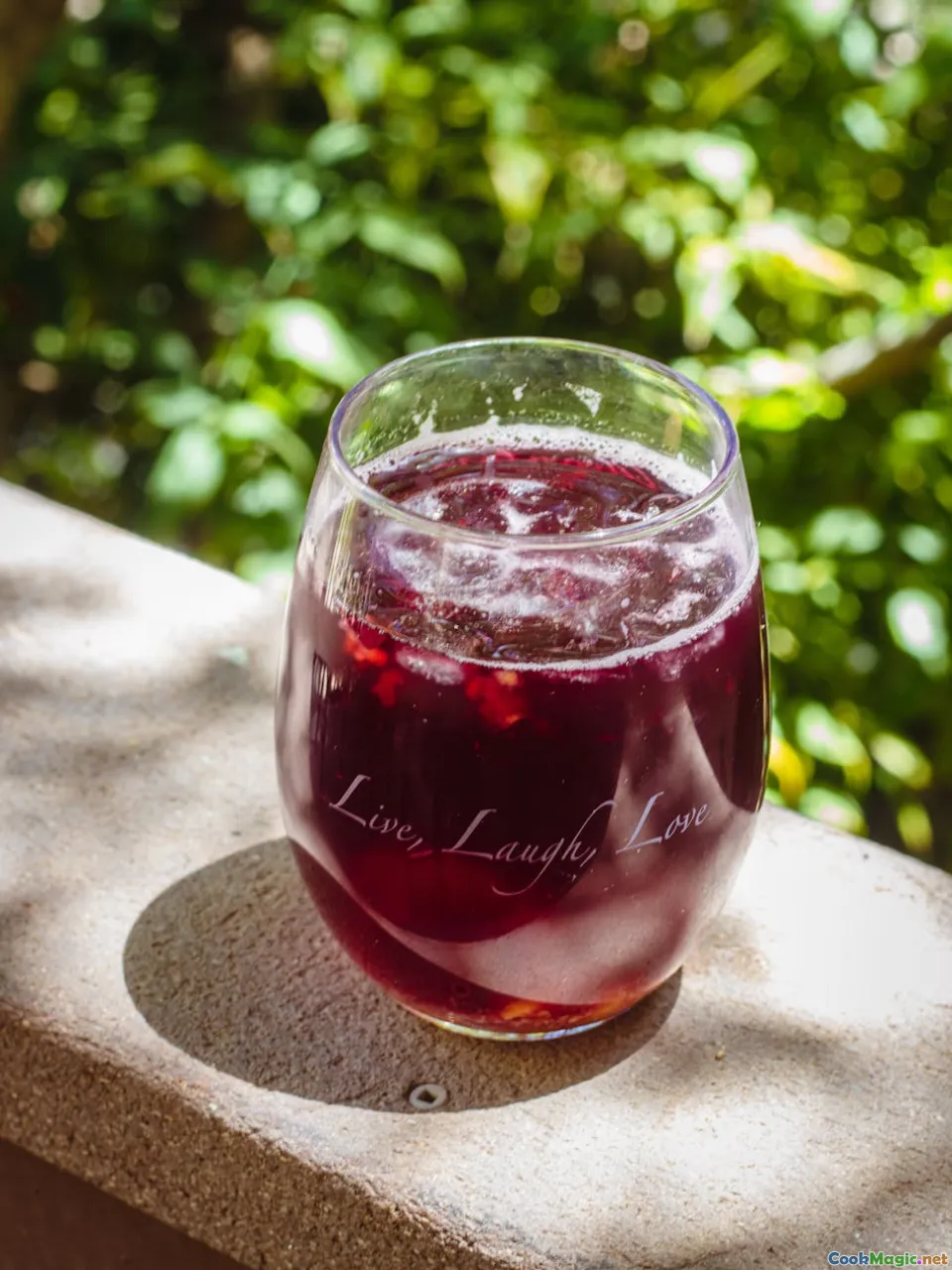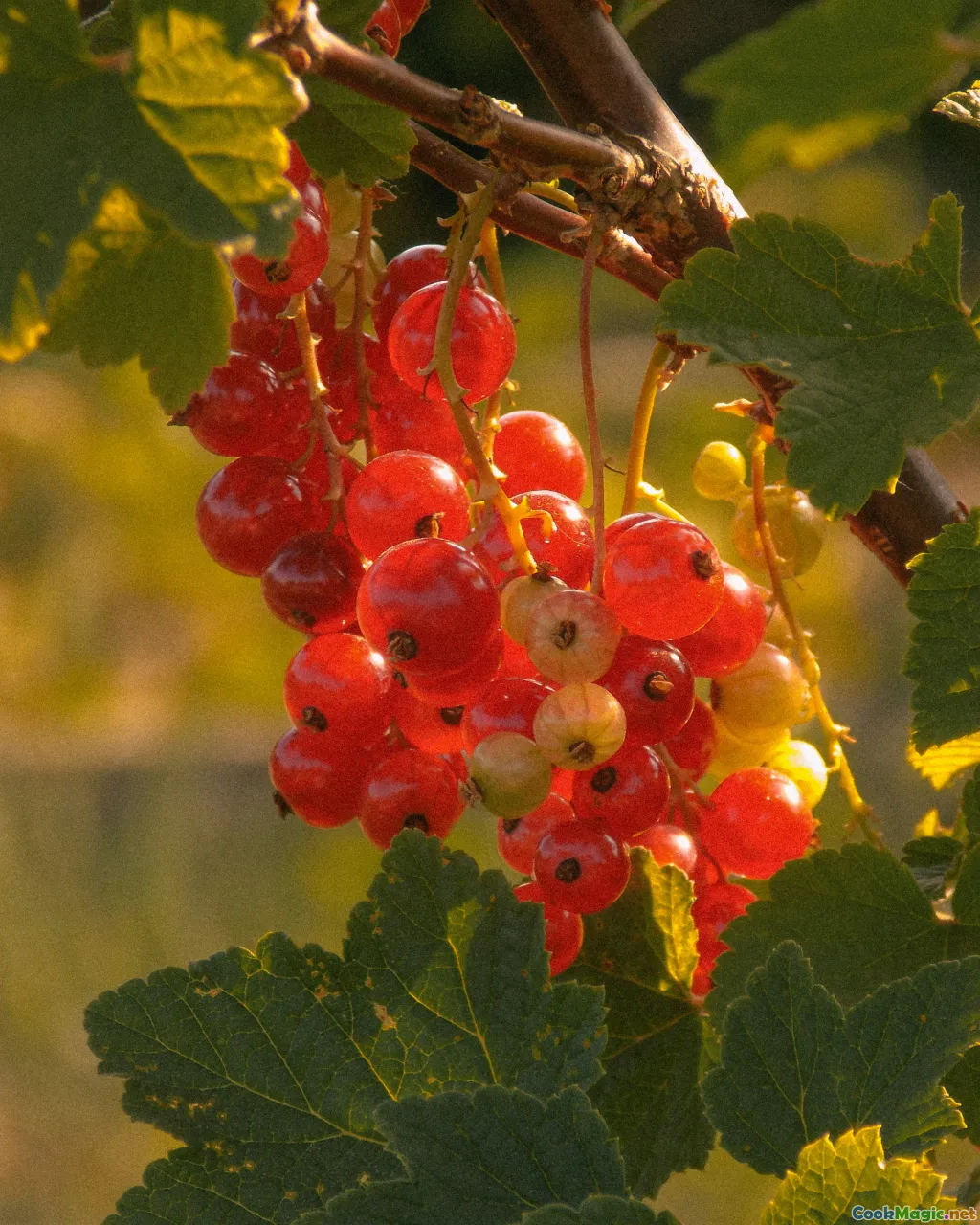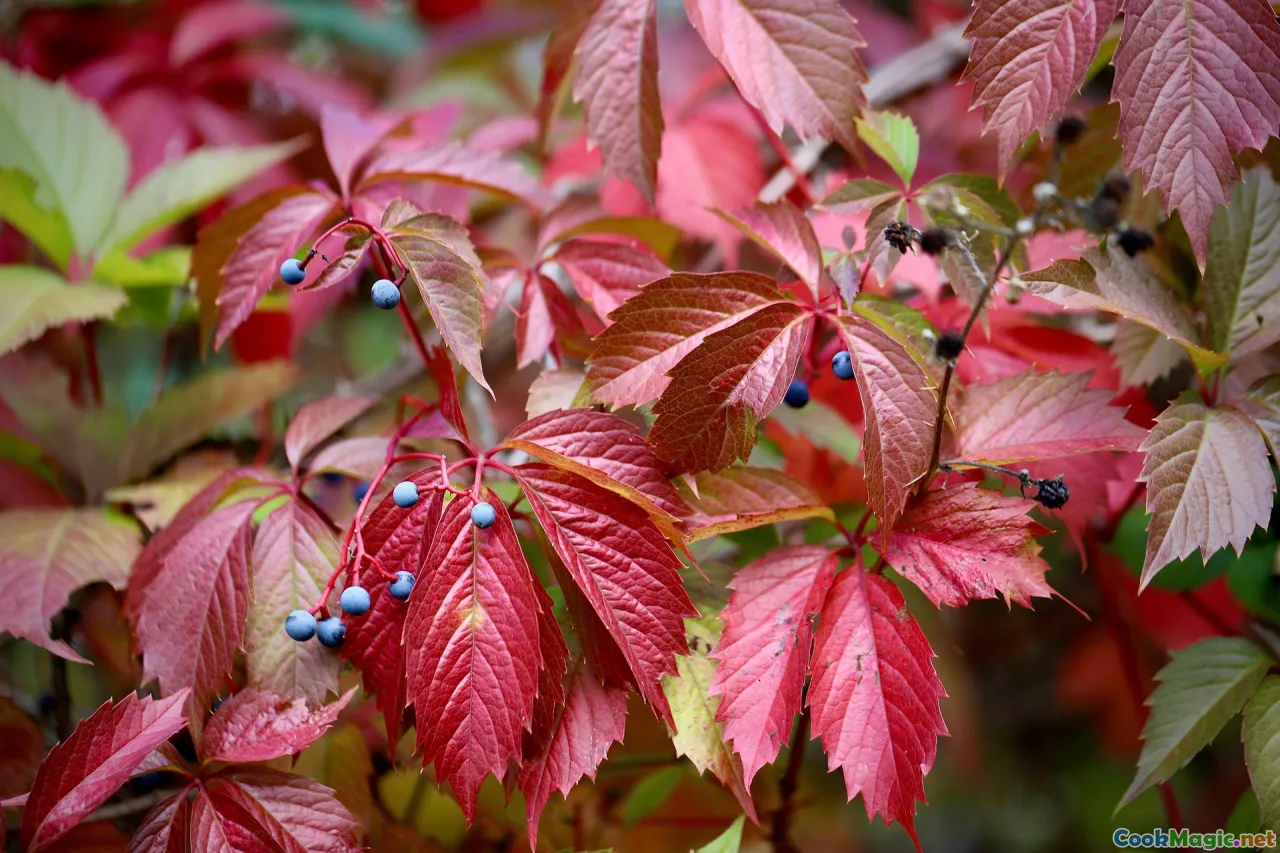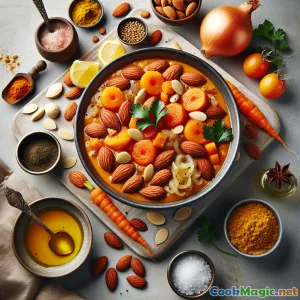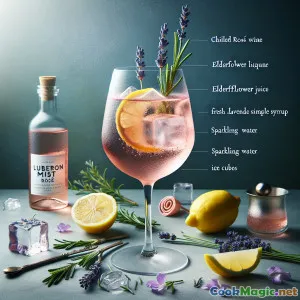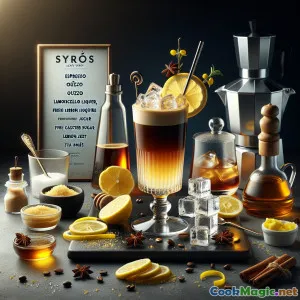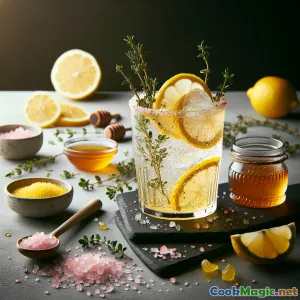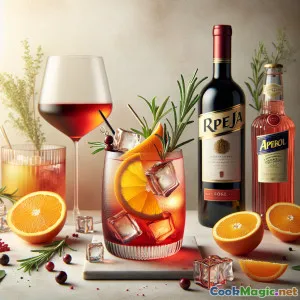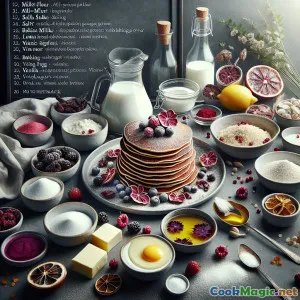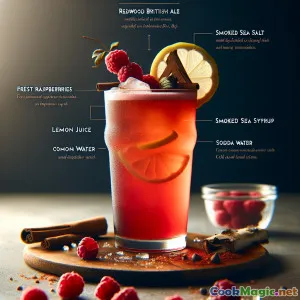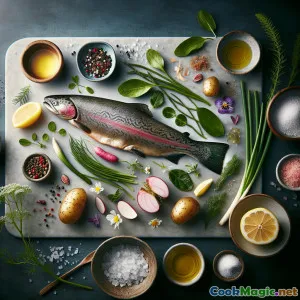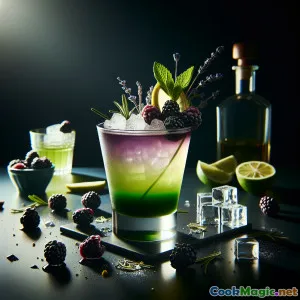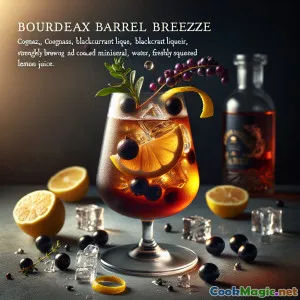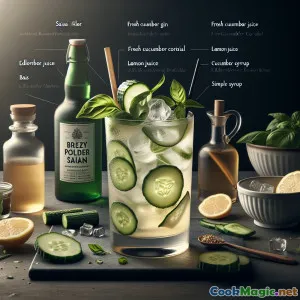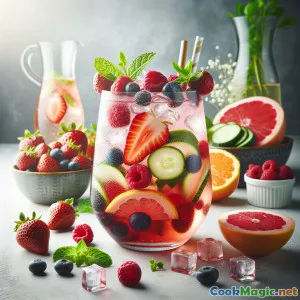
Kastilische Sommer-Sangria: Ein Lebendiger Englischer Twist
(Castilian Summer Sangria: A Vibrant English Twist)
(0 Bewertungen)0
344
Juli 21, 2025
Problem melden
Zutaten
-
750 ml Trockener englischer Schaumwein aus Weißwein
(Chilled; can substitute Spanish cava)
-
150 grams Erdbeeren
(Washed, hulled, sliced)
-
75 grams Himbeeren
-
75 grams Heidelbeeren
-
1 medium Roter Grapefruit
(Sliced in thin rounds)
-
50 ml Holunderblütenlikör
(Adds floral English note)
-
40 ml Trockener weißer Wermut
(For herbal complexity)
-
1/2 medium Gurke
(Dünn geschnitten)
-
10 leaves Frische Minzblätter
(Slightly bruised)
-
250 ml Sprudelwasser
(Gekühlt, zum Auffüllen)
Eiswürfel, as needed
(Chilled; can substitute Spanish cava)
(Washed, hulled, sliced)
(Sliced in thin rounds)
(Adds floral English note)
(For herbal complexity)
(Dünn geschnitten)
(Slightly bruised)
(Gekühlt, zum Auffüllen)
Nährwerte
- Portionen: 6
- Portionsgröße: 1 Glas (200ml)
- Calories: 137 kcal
- Carbohydrates: 0 g
- Protein: 1 g
- Fat: 0 g
- Fiber: 2 g
- Sugar: 13 g
- Sodium: 18 mg
- Cholesterol: 0 mg
- Calcium: 22 mg
- Iron: 0.5 mg
Anweisungen
-
1 - Combine Fruits & Herbs:
In a large pitcher, combine the sliced strawberries, blueberries, raspberries, grapefruit slices, mint leaves, and cucumber (if using).
-
2 - Add Cordial & Vermouth:
Pour in the elderflower cordial and dry white vermouth. Gently muddle the ingredients with a wooden spoon to release flavors.
-
3 - Incorporate Wine:
Add the chilled sparkling English wine over the fruit mixture and stir gently.
-
4 - Chill:
Allow the sangria to rest in the fridge for at least 6 minutes or up to 1 hour so the flavors meld and infuse.
-
5 - Finish & Serve:
Just before serving, stir in soda water. Fill glasses with ice, pour over the sangria, garnish with extra mint, and serve chilled.
In a large pitcher, combine the sliced strawberries, blueberries, raspberries, grapefruit slices, mint leaves, and cucumber (if using).
Pour in the elderflower cordial and dry white vermouth. Gently muddle the ingredients with a wooden spoon to release flavors.
Add the chilled sparkling English wine over the fruit mixture and stir gently.
Allow the sangria to rest in the fridge for at least 6 minutes or up to 1 hour so the flavors meld and infuse.
Just before serving, stir in soda water. Fill glasses with ice, pour over the sangria, garnish with extra mint, and serve chilled.
Mehr über: Kastilische Sommer-Sangria: Ein Lebendiger Englischer Twist
Castilian Summer Sangria: A Celebration of English Flair and Spanish Heritage
Sangria is widely recognized as one of Spain’s most festive and beautiful drinks, a punch-style cocktail meant for celebrating, sharing, and savoring over laughter-filled conversations ensemble. ‘Castilian Summer Sangria’ takes its inspiration from the rustic Spanish classic, layering it with subtle nods to English countryside flavors for a unique cross-cultural mingling. The resulting beverage tells a lively tale of strawberry fields and sunny grape harvests, all in a glass.
A Bit Of Sangria History
Traditionally, sangria originated in Spain’s sunny regions centuries ago, where locals would infuse red wine with stone fruits, oranges, and spices to create a cooling drink—literally named for its ‘blood’ color (sangre means ‘blood’ in Spanish). Over the years, countless variations bloomed, mixing red, white, even rosé wines with extravagant regional fruits and spirits. Its popularity soared through global expositions and bohemian enclaves, firmly planting sangria as a staple at parties and summer gatherings alike.
English Ingredients, Spanish Spirit
While the core elements of sangria—wine, fruit, a touch of sweetness—remain present in this recipe, ‘Castilian Summer Sangria’ explores the meeting point between English botanicals and Iberian tradition. The sparkling English white wine delivers finesse, effervescence, and sophisticated freshness. Elderflower cordial, a beloved English countryside staple, brings in an unmistakable floral note and sweetness distinct from traditional Spanish versions.
Infusing the sangria with fresh mint, sliced strawberries, blueberries and raspberries takes its cues from English summer gardens, replacing the more classic oranges, apples, or peaches often seen in Spanish versions. Gordon’s enthusiasm for cucumber as a cooling element finds a place here—adding a subtle, green savoriness that works famously in garden cocktails across the UK.
Pink grapefruit provides a zesty balance, choosing complexity over just simple orange—so each sip holds bright acidity against the wine and berry-sweetness. And if you’re adventurous, a splash of white vermouth introduces herbaceous layers that elegantly play off mint and elderflower.
Tips & Notes
- Always chill all your ingredients before mixing—the fruit infuses more gradually, and flavors remain sharp rather than muddled.
- Muddling or gently pressing the berries and mint before adding wine creates a fragrant base, marrying the main flavors.
- If you prefer a slightly sweeter sangria, you can level up the elderflower cordial or add a teaspoon or two of golden caster sugar.
- Versatility is a hallmark: for a non-alcoholic version, substitute the wine with non-alcoholic sparkling elderflower or grape juice, omit the vermouth, and dial up the soda water.
- Let the sangria rest! Even a brief “nap” in the refrigerator helps meld flavors, allowing the fruit to steep in the wine beautifully. One hour is ideal, but even just a few moments makes a dramatic difference.
Occasions & Pairings
Castilian Summer Sangria shines at picnics, barbecues, brunches, and garden parties. Imagine a pitcher nestled in an ice bath next to cucumber sandwiches, scones, quiches, or spiced Mediterranean tapas—it complements delicate and bold flavors alike, harmonizing especially well with lightly caramelized summer vegetables, creamy soft cheeses, and seafood paellas.
What Makes It Unique
What’s particularly distinctive about this recipe is how it marries Anglo and Iberian traditions rather than relying purely on one or the other. Elderflower and mint bring aristocratic, almost Victorian sensibility to the fore (English tarts and herbal teas come to mind), while berries soak up both British and pan-European seasonal bounties. Sparkling English wine, in lieu of classic still red, lightens the drink and provides celebratory sparkle more reminiscent of Piccadilly parades than Andalusian vineyards.
Closing Thoughts & Inspirations
Creating a drink that bridges train journeys from English countryside valleys to Spanish olive groves is a festive, communal gesture. It’s ideally made for sharing—you’ll find it adapts easily, whether for two friends on a sunlit balcony or a garden fête teeming with neighbors.
In every glass, ‘Castilian Summer Sangria’ serves as a reminder of how easy it can be to invoke place, memory, and togetherness with something as simple as fruit, wine, and time. Here’s to hypnotic sunsets, toasts with friends, and the enduring appeal of cultures creatively entwined.

